Table of Contents
I. Introduction
Croton, a lush and vibrant plant, has delighted gardeners and botanical enthusiasts for decades. Its colorful foliage and unique patterns make it an impressive addition to any garden or indoor space.
In addition to its aesthetic beauty, Croton plays a significant role in the ornamental landscape. Its resilience and adaptability make it a popular choice for landscaping in many regions of the world.
This blog aims to delve into the fascinating world of Croton. From its history and origin to its various species and specific care, we will explore everything there is to know about this versatile and enchanting plant. Come with us on this ornamental journey!
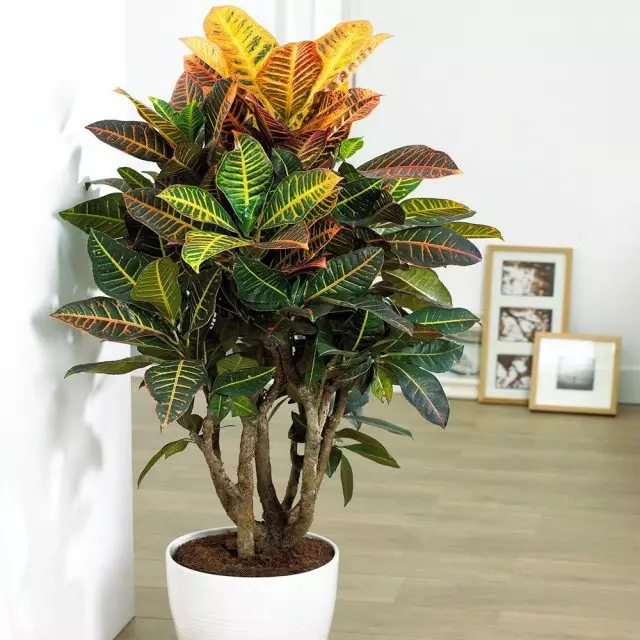
II. What is Croton?
Croton, scientifically known as Codiaeum variegatum, is native to the tropical regions of Asia and the Pacific. Its history goes back centuries and it was first cultivated by ancient civilizations for its ornamental and medicinal properties.
Description of Croton’s Physical Characteristics
Croton is recognized by its large, glossy leaves, often displaying a variety of vibrant colors, such as red, orange, yellow and green. Its leaves can have unique patterns, including spots, stripes and serrated edges. In addition, Croton can grow as both a shrub and a tree, depending on the growing conditions.
common varieties of Croton
There are countless varieties of Croton, each exhibiting a unique combination of colors and patterns on its leaves. Some of the most popular varieties include Croton Petra, with leaves in shades of orange and green, Croton Mammy, with leaves in shades of red and green, and Croton Gold Dust, with leaves speckled with yellow. These varieties are just a small sample of the impressive diversity found within the Croton family.
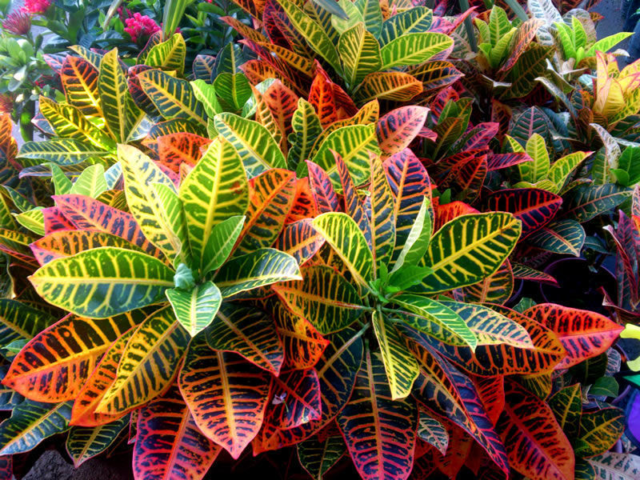
III. 6 Curiosities about Croton
1. Exotic Origin and Geographical Distribution
Croton has a fascinating origin, being native to the tropical regions of Asia and the Pacific. Its geographical distribution covers a vast area that includes countries such as India, Indonesia, Malaysia and parts of Australia.
2. Variety of Colors and Leaf Patterns
One of Croton’s most striking features is its incredible variety of leaf colors and patterns. From vibrant shades of red, orange and yellow to intricate patterns of spots, stripes and serrated edges, each variety of Croton is a unique work of botanical art.
3. Cultural and Symbolic Meaning of Croton in Different Regions of the World
In various cultures around the world, Croton has different symbolic meanings. In some regions, it is associated with prosperity and good luck, while in others it is considered a symbol of courage and strength.
4. Croton’s Medicinal Properties or Traditional Uses
In addition to its ornamental beauty, Croton has been used throughout history for its medicinal properties. In some Asian medicinal traditions, parts of the plant are used to treat a variety of conditions, from skin problems to digestive problems.
5. Care and Peculiarities in Growing Croton
Although Croton is a hardy plant, it has its own peculiarities when it comes to care. It requires adequate exposure to sunlight and well-drained soil to thrive. In addition, it is sensitive to extreme temperatures and may need regular pruning to maintain its shape and health.
6. Historical Curiosities or Interesting Facts about Croton
Throughout history, Croton has played diverse and intriguing roles. From being mentioned in ancient texts to being cultivated by royalty and aristocrats, there is a wealth of historical trivia associated with this fascinating plant.
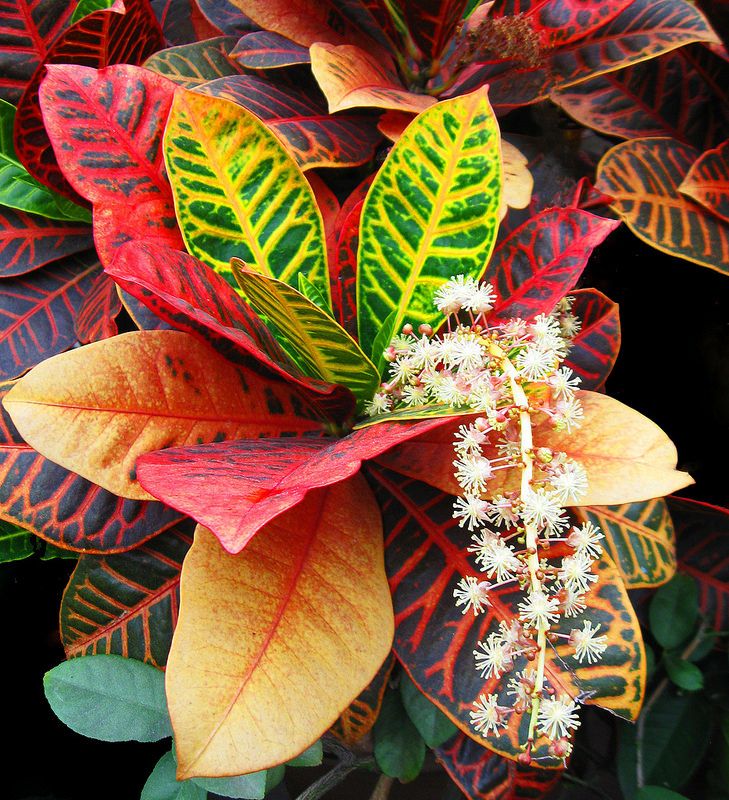
IV. Benefits and Uses of Croton
Aesthetic Beauty as an Ornamental Plant
Croton is widely appreciated for its incomparable aesthetic beauty. Its lush, colorful leaves add a touch of liveliness and elegance to any environment, whether in gardens, on balconies or indoors.
Environmental Benefits and Air Purification
In addition to its visual appeal, Croton also offers significant environmental benefits. Like many other plants, it contributes to air purification by absorbing common pollutants and releasing fresh oxygen. Having a Croton in the home or workplace can improve air quality and promote a healthier environment for occupants.
Possible Uses in Landscaping and Interior Decoration
Due to its versatility and resistance, Croton is a popular choice for landscaping and interior decoration. It can be used in a variety of ways, from creating focal points in gardens to adding color and texture to interior spaces. What’s more, its ability to adapt to different light and soil conditions makes it a viable option for a variety of landscaping and interior design projects.
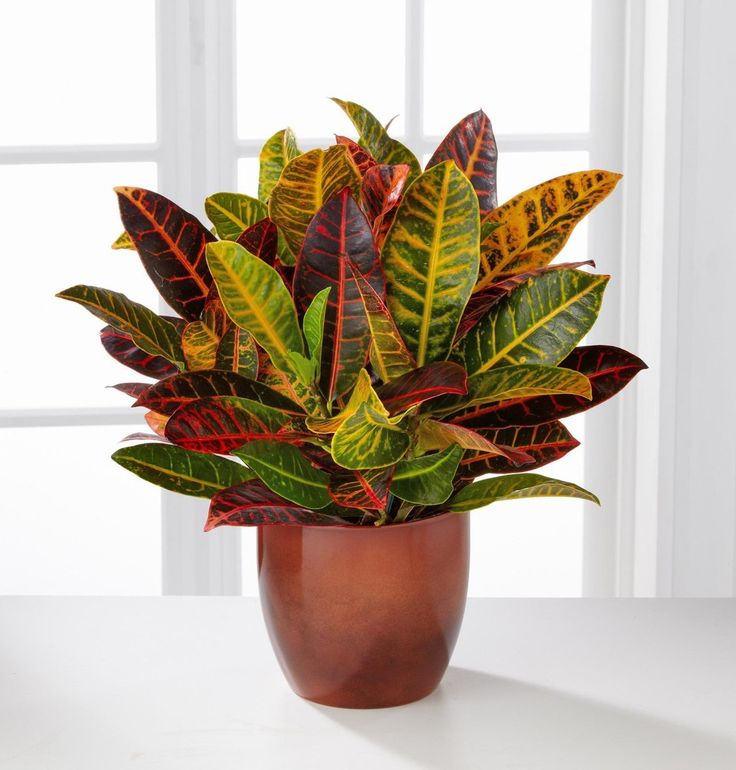
V. How to Care for Croton
Ideal Light, Water and Temperature Conditions
To ensure the healthy growth of Croton, it is essential to provide the ideal light, water and temperature conditions. It prefers direct sunlight or indirect glare and should be watered when the soil is dry to the touch. Avoid overwatering to prevent root rot. As for temperature, Croton thrives in warm climates and prefers temperatures between 18°C and 27°C.
Tips for Maintenance and Prevention of Common Problems
To keep your Croton healthy, it’s important to carry out regular maintenance and keep an eye out for possible problems. Remove dead or damaged leaves to promote growth and prevent disease. Look out for signs of pests, such as spider mites and mealybugs, and treat them promptly with suitable insecticides. Also, avoid exposing Croton to cold drafts or excessively humid conditions, as this can lead to health problems.
Tips for Boosting the Plant’s Growth and Health
To boost Croton’s growth and health, consider fertilizing it regularly during the growing season with a balanced fertilizer. In addition, you can prune the plant to promote more compact growth and stimulate the emergence of new shoots. Make sure you use clean, sharp pruning tools to avoid damaging the plant. It is also useful to repot the Croton every two years to renew the soil and provide additional space for root growth.
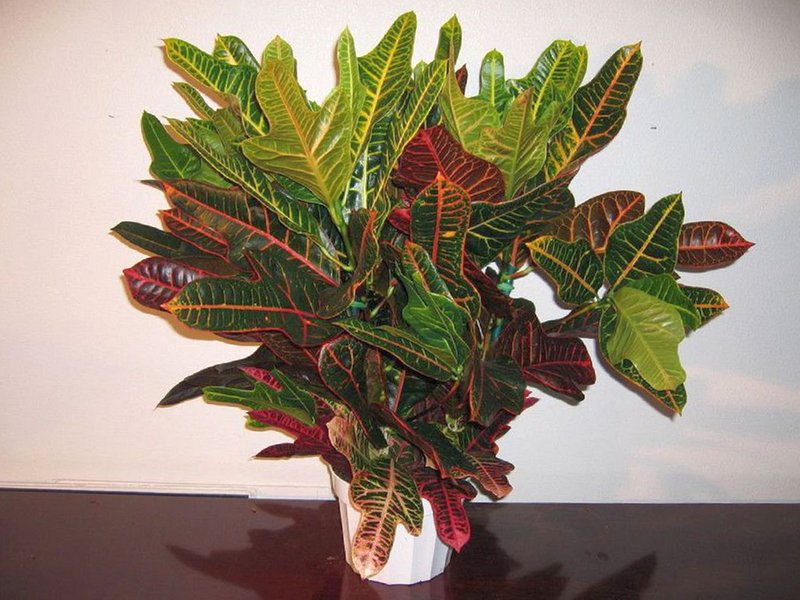
VI. Conclusion
Throughout this blog, we have explored many fascinating curiosities about Croton, from its exotic origin and geographical distribution to its medicinal properties and specific cultivation care. We have discovered the diversity of colors and patterns of its leaves, as well as their cultural significance in different parts of the world.
Croton is not just a common ornamental plant; it is a masterpiece of nature that adds color, life and freshness to any space. Its stunning beauty and ability to purify the air make it a valuable addition to both landscaping and interior decoration. In addition, its rich history and medicinal properties highlight its importance beyond the aesthetic aspect.
If you have any more curiosities, experiences or tips about Croton, we’d love to hear them! Share your stories and knowledge in the comments below and join the community of Croton enthusiasts on this exciting botanical journey. Together, we can continue to explore and appreciate the wonder that is the world of Croton.
Frequently Asked Questions
Why does the croton turn red?
Croton can acquire reddish tones due to various factors, such as exposure to intense direct sunlight, changes in ambient temperature and water stress. These conditions can trigger the production of red pigments in the leaves as a defense response by the plant.
How many qualities of croton are there?
There are countless varieties of Croton, each with its own distinct characteristics in terms of leaf color, pattern and shape. From vibrant shades of red, orange and yellow to intricate patterns of spots, stripes and serrated edges, the diversity of Crotons available is vast and impressive.
What does the croton like?
Croton thrives in conditions of direct sunlight or indirect glare and prefers moderate soil moisture. It is essential to provide Croton with an environment with a temperature between 18°C and 27°C for healthy growth. In addition, watering when the soil is dry to the touch and avoiding cold drafts are essential for the well-being of this ornamental plant.







